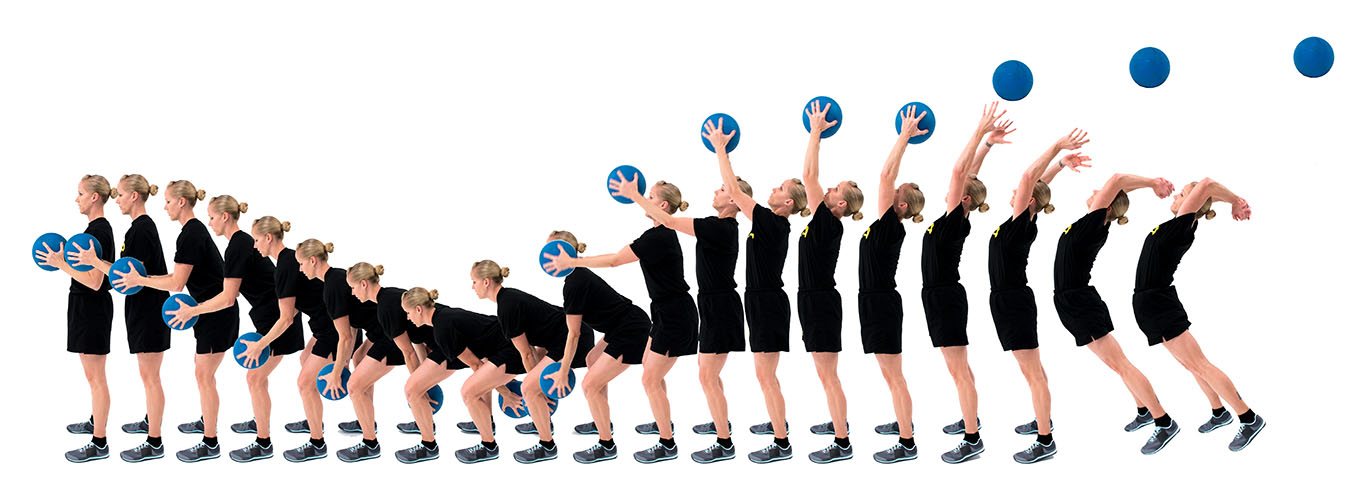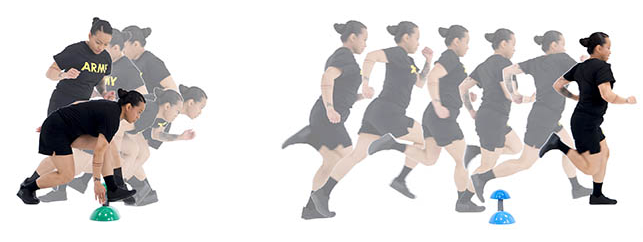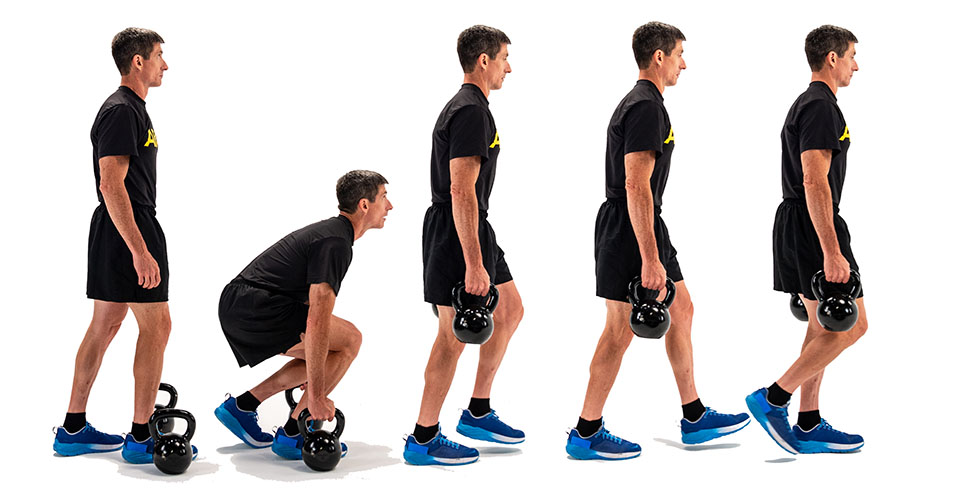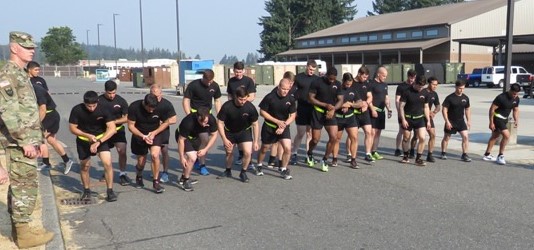
The Army Vision says that the physical lethality and mental toughness of the American Soldier are keys to the success of our Army in ground combat. The ACFT will strengthen our fitness culture, our Soldier’s fitness for battle and our Army’s readiness for war.
MG LONNIE HIBBARD
COMMANDER
CENTER FOR INITIAL MILITARY TRAINING
MG LONNIE HIBBARD
COMMANDER
CENTER FOR INITIAL MILITARY TRAINING
Select an event below to learn more.
These are the six events of the ACFT.
The tools provided are for educational purposes only and are not to be used in place of official U.S. Army forms.
Select an event below to learn more about the needed equipment.
Specifications for ACFT equipment are described in Appendix A of the ACFT IOC Manual. Minimum equipment requirements for a single lane and a 16-lane set of ACFT equipment are as follows:
Select an equipment below to learn more.
∗ Single Lane:∗ To equip a single lane with the minimum weight (the 140lb lane):
∗ To equip a single lane with the maximum weight (the 340lb lane):
∗ To equip 16 lanes for the MDL using the plate arrangement in Table 1.1 requires 2110lbs:
- 34 x 45lb bumper plates
- 10 x 35lb bumper plates
- 2 x 25lb bumper plates
- 8 x 15lb bumper plates
- 12 x 5lb bumper plates
| Plates (lbs) | Hex Bar + Plates (lbs) | Weight Level (lbs) |
|---|---|---|
| 2 @ 35 + 2 @ 5 = 80 | 80 + 60 = | 140 |
| 2 @ 45 + 2 @ 5 = 100 | 100 + 60 = | 160 |
| 2 @ 45 + 2 @ 15 = 120 | 120 + 60 = | 180 |
| 2 @ 45 + 2 @ 25 = 140 | 140 + 60 = | 200 |
| 4 @ 35 = 150 | 150 + 60 = | 210 |
| 2 @ 45 + 2 @ 35 = 160 | 160 + 60 = | 220 |
| 4 @ 45 = 180 | 180 + 60 = | 240 |
| 4 @ 45 + 2 @ 5 = 190 | 190 + 60 = | 260 |
| 4 @ 45 + 2 @ 15 + 2 @ 5 = 220 | 220 + 60 = | 280 |
| 4 @ 45 + 4 @ 15 = 240 | 240 + 60 = | 300 |
| 4 @ 45 + 2 @ 35 + 2 @ 5 = 260 | 260 + 60 = | 320 |
| 6 @ 45 + 2 @ 5 = 280 | 280 + 60 = | 340 |
| *plate arrangement will change if the weight of the bar does not weigh 60lbs. | ||
Select an equipment below to learn more.
∗ Single Lane:- 1 x 10 lb medicine ball
- 1 x 25 meter measuring tape (also used for SDC)
- 1 x measuring stick
- 12 x field cones (also used for SDC) to mark the start and finish lines and the 5 meter points in each lane
- 1 x hand towel
- 16 x 10lb medicine ball
- 8 x 25 meter measuring tapes (also used for SDC), placed between 2 lanes
- 8 x measuring sticks
- 110 x field cones (also used for SDC)
- 16 x hand towel
Select an equipment below to learn more.
∗ Single Lane:Select an equipment below to learn more.
∗ Single Lane:Select an equipment below to learn more.
∗ Single Lane:∗ 16-Lane set has 16 x pull-up bars or one x Climbing Pod with the following dimensions and features:
- 8 x 5ft wide climbing bars at 7.5ft off the ground with step ups at 1.5ft and 2ft off the ground.
- 8 x 5ft wide climbing bars at 8.0ft off the ground with step ups at 1.5ft and 2ft off the ground.
Select an equipment below to learn more.
2 to 17 x stopwatches (one for the OIC or NCOIC and one for each Grader)Select an event below to learn more.
These are the alternate assessments for the ACFT MOD.
The 5000 Meter Row requires a stationary rowing machine. The machine must have mechanically adjustable resistance and must be available for training and testing. The seat, handles and foot straps must be adjustable to accommodate Soldiers of different sizes. It must have an odometer. The machine must be calibrated prior to test administration.
The event supervisor will allow each Soldier a short warm-up period and an opportunity to adjust resistance and seat position. The supervisor will read the following instructions aloud and answer questions.
When the timer gives the command, “GET SET” the Soldiers will position themselves to begin the event. Time begins when the timer gives the command, “GO.” The timer will call out times in minutes and seconds as Soldiers near the test distance or the required 25 minute time. The timer calls out the time remaining every 30 seconds for the last two minutes of the allowable time and every second during the last ten seconds leading up to the 25 minute mark.
The scorer must observe the Soldier throughout the event. The scorer will have to observe the odometer as the distance approaches 5000 meters. The scorer records the time in the time block to complete 5000 meters and records the point score.
The 15000 Meter Bike event requires a stationary cycle ergometer. The ergometer must be available for training and testing. The seat and handlebars must be adjustable to accommodate Soldiers of different sizes. It must have an odometer. The cycle ergometer must be calibrated prior to test administration. The process for setting the distance on the odometer will be similar to that used on the rowing machine.
The event supervisor will allow each Soldier a short warm-up period and an opportunity to adjust handlebar and seat height. The supervisor will read the following instructions aloud and answer questions.
When the timer gives the command, “GET SET” the Soldiers will position themselves to begin the event. Time begins when the timer gives the command, “GO.” The timer will call out times in minutes and seconds as Soldiers near the end of the test distance or the required 25 minute time. The timer calls out the time remaining every 30 seconds for the last two minutes of the allowable time and every second during the last ten seconds.
The scorer must observe the Soldier throughout the event. The scorer will have to observe the odometer as the distance approaches 15000 meters. The scorer records the time in the time block to complete 15000 meters and records the point score.
The 1000 Meter Swim event requires a swimming pool with a 25 meter lane and minimum depth of 1 meter. The event requires one event supervisor, one scorer for every three Soldiers, one timer, one back-up timer, and support personnel to ensure proper control and safety. The event supervisor will not be an event scorer.
The event supervisor will read the following instructions aloud and answer questions. He will also allow each Soldier a short warm-up period in the pool in order to acclimate.
When the timer gives the command, “GET SET” the Soldiers position themselves in the water holding on to the wall ready to begin the event. When the timer gives the command, “GO” time starts and the tested Soldier begins swimming. The timer calls out times in minutes and seconds as Soldiers near the finish or the required 25 minute time. Time is recorded by the scorer when the Soldier touches the end of the pool or crosses a predetermined line that establishes the 1000 meter mark.
Scorers must observe the Soldiers assigned to them. They must ensure that each Soldier touches the bulkhead (wall) at every turn. The scorer records the time in the time block and the points in the points block. The 1000 meter Swim is entered in the alternate event block. If the pool length is measured in yards, the scorer can convert the exact distance to meters. To convert meters to yards, multiply the number of meters by 1.094. 1000 meters is 1094 yards.

The Soldier will face away from the throw line and grasp the medicine ball (10lb) with both hands at hip level and stand with heels at (but not on or over) the start line. To avoid having the ball slip, the Soldier will grasp firmly and as far around the sides of the ball as possible. The Soldier may grasp under the ball. The Soldier may make several preparatory movements, bending at the trunk, knees and hips while lowering the ball almost to the ground.
After the preparatory phase, the Soldier will move quickly and powerfully to throw the ball backwards and overhead. The Soldier must be stationary prior to a throw – no hopping, stepping or running to initiate the throw. The Soldier may jump to exert more power during the throw with one or both feet leaving the ground. If the Soldier falls or steps onto or beyond the start line, the repetition will be recorded as a zero.
The Soldier will perform two throws alternating with the Soldier in an adjacent lane. The longest throw will count for record. The Soldier will use maximal effort to throw the ball backwards and overhead as far as possible.

With the hands placed flat on the ground, the index fingers will be inside the outer edge of the shoulders. The hands will return to this position to complete each repetition. The feet will remain on the ground throughout the event. They cannot be more than a boot’s width apart. The HRP consists of four movements:
On the command “GO,” the Soldier will push the whole body up from the ground as a single unit to fully extend the elbows and move to the up position (Front Leaning Rest).
After reaching the up position, the Soldier will bend the elbows to lower the body to the ground. The chest, hips and thighs will touch the ground as a single unit. The head or face does not have to contact the ground.
The Hand Release: without moving the head, body or legs, the Soldier will immediately move both arms out to the side, straightening the elbows into the T position. The arms and hands may touch or slide along the ground during this movement.
The Soldier will make an immediate movement to place their hands back on the ground to return to the starting position to complete the repetition.





On the command “GO” move as quickly as possible from the prone position, sprint 25 meters and touch the 25 meter line with the foot and hand, turn and sprint back to the start. If the Soldier fails to touch the 25 meter line with the hand and foot, the Grader will call them back to do so.
Grasp each strap handle on the 90lb sled and pull the sled backwards until the back (entire) of the sled crosses the 25 meter line. Turn the sled and continue pulling backward until the sled has crossed the start line. If the Soldier fails to cross the 25 meter line, the Grader will call them back to do so.
Perform the Lateral (either to the right or left) for 25 meters, touching the 25 meter line with a foot and hand and perform the Lateral in the opposite direction back to the start line. The Soldier’s feet must not cross and must remain parallel to each other and perpendicular to the direction of travel. If the Soldier fails to touch the 25 meter line with the hand and foot, the Grader will call them back to do so.
Grasp the handles of the two 40lb kettlebells and sprint for 25 meters, touch the 25 meter line with the foot only, and return back to the start line. After crossing the start line, place the kettlebells on the ground without dropping them. If the Soldier fails to touch the 25 meter line with the foot, the Grader will call them back to do so. If the Soldier drops the kettlebells at the start line the grader will call the Soldier back to re-place them under control.
Turn and sprint 25 meters, touch the 25 meter line with foot and hand, turning and sprint back to the start line. If the Soldier fails to touch the 25 meter line with the hand and foot, the Grader will call them back to do so.

The LTK has three parts: preparatory phase, upward movement and downward movement:
On the command “GET SET,” the Soldier will assume a straight-arm hang on the bar, with feet off the ground, knees bent if necessary. The grip is the Alternating Grip with hands no more than a fist’s width apart – as measured by the grader. The body is positioned perpendicular to the bar. The Soldier’s elbows, body and legs are straight. Legs and feet are not crossed. Feet cannot contact the ground or the climbing bar.
On the command “GO” the Soldier will flex at the elbows, knees, hips, and waist to bring the knees up. The elbows must flex. They cannot remain fully extended or straight. The right and left knees or front of the thighs must touch the right and left elbows respectively so that they touch or are in contact with the elbows at the same time. Contacting the upper arm in the triceps muscle region does not count. The Grader must observe both knees in contact with both elbows for the Soldier to receive credit for the repetition.
The Soldier will return under control to the straight-arm hang position to complete the repetition. If the elbows remain bent, that repetition will not count. Deliberate, active swinging of the trunk and legs to assist with the exercise is not permitted. Small, inconsequential or passive movement of the body and twisting of the trunk is permitted. The Soldier may rest in the down position.
The event will end when the Soldier voluntarily stops or drops from the bar. Using the ground or post to rest or push from between repetitions will also terminate the event.

Sound judgment must be used in the selection of the run course. When environmental conditions prohibit outdoor testing, an indoor track may be used for the 2-Mile Run. There is no requirement to survey run courses; however, selected test sites should be free of significant hazards such as traffic, slippery road surfacesand areas where heavy air pollution is present. A generally flat, measured running course with a solid, improved surface that is not more than 3 percent uphill grade and has no overall decline (start and finish must be at the same altitude).
On the command “GO,” the clock will start and the Soldier will begin running at his or her own pace, completing the 2-mile distance without receiving any physical help. The Soldier may walk or pause but cannot be picked up, pulled or pushed in any way. The Soldier may be paced by another Soldier. Verbal encouragement is permitted. If the Soldier leaves the run course at any time or at any point before completing the 2-mile distance, the event will be terminated.

On the command of “GET SET,” the Soldier will step inside the hex bar, feet shoulder width apart, and locate the mid-point of the hex bar handles. The Soldier will bend at the knees and hips, reach down and grasp the center of the handles using a closed grip. Arms will be fully extended, back flat, head in line with the spine or slightly extended, and heels in contact with the ground. Each repetition will begin from this position.
On the command of “GO,” the Soldier will lift the bar by straightening the hips and knees in order to reach the Straddle Stance. The hips should not rise before or above the shoulders. The back should remain straight - not rounded out or flexed. The feet will remain in the same position. The Soldier and the weight must remain balanced and controlled throughout the movement.
After reaching the Straddle Stance position, the Soldier will lower the bar back to the ground under control while maintaining a straight back. The bar must be placed on the ground and not dropped. The weight plates must touch the ground to complete a repetition.